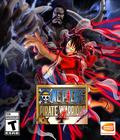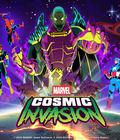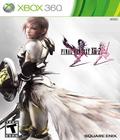Although there are 13 entries in the main series, it wasn't until Final Fantasy X-2 that Square Enix decided to make sequels for traditionally stand-alone stories. Each of those sequels does something unexpected compared to what was introduced in the main entry. Final Fantasy X-2 provided an alternate avenue for the main story, did away with the gradual introduction of new characters to the party, used the job system to augment current characters, and included constant costume changes. Final Fantasy IV: The After Years was released episodically before being compiled into one game; it altered the battle system by having the time of day in the game affect abilities and attacks. For Final Fantasy XIII-2, the development team continued throwing in new gameplay mechanics while doing what few expected: addressing some of the criticism levied against the parent title. Depending on how you viewed the original PS3/Xbox 360 release from two years ago, the changes in Final Fantasy XIII-2 will either be just right or not enough.
Unlike Final Fantasy X-2, the plot for this sequel is more direct. Three years have passed since both Gran Pulse and Cocoon were saved from destruction and Lightning isn't dead. She's now a knight in the realm of Valhalla and is in constant battle with a man named Caius. In the middle of this fight, a time traveler named Noel appears; he's from 700 years in the future and is apparently the last human being left in the world. Upon a chance meeting with Lightning, he's given a magic Moogle and sent on a mission to find Lightning's sister, Serah. Meanwhile, Serah is dreaming about Lightning, who she believes is still alive despite everyone's insistence otherwise. After a comet crashes near her village, she finds Noel and recognizes him as the man who constantly appears in her dreams. After some coaxing, she goes with him through the time gate to find her way to Valhalla while Noel tries to change his bleak future.
It's commendable that the game includes a primer to recap Final Fantasy XIII. Considering how much it references characters, locations and events from the previous game, the primer makes it easy for players to reconnect with the universe. Inadvertently, the primer is also useful for those who never finished the previous title, got frustrated before the end, or simply didn't bother with it. Even though it only covers the basics of each chapter and leaves out most of the details, it provides enough information so people can quickly get an idea of what they should be paying attention to in the plot.
After viewing the initial cut scene (for the second time since it also plays before the title screen), you're re-introduced to the game's battle system, which is mostly the same as before. The title marks the return of the Paradigm system, where your character's available actions are determined by his or her role in the paradigm category. A character who primarily uses physical attacks can quickly change his arsenal to use only magic attacks or act defensively instead. The switch happens immediately, so you aren't locked from the rest of your moves if you decide to switch paradigms, and you have the option to plan out individual moves yourself or use "auto attack" to let the computer decide your moves. Another returning aspect of the battle system is the stagger effect, where connecting hits on an enemy fills up a meter. Filling up the corresponding meter stops the enemy from unleashing attacks and makes your hits more powerful; it's essential in difficult fights.
The battle system opens up as you progress. Cinematic battles are a new addition that is similar to Quick Time Events (QTEs) in games like God of War. You'll encounter a few cut scenes where button prompts appear, and hitting them before time expires ensures that you perfectly execute the scripted attack. The mechanic appears more prominently in boss fights, and while it may turn off some players, others may appreciate it.
Another addition to the combat system is the inclusion of monster characters to your army. You'll eventually come across creatures that you can capture when you defeat them, and once you do, you can fight alongside them in battle. You can capture as many creatures as you want, but you can only set up three of them in an army at any time. Unlike Noel and Serah, these monsters level up through the consumption of special items instead of experience gained through battles. They can build up a meter for special attacks by performing actions in battle.
Monsters can also be combined to form new monsters with different powers, so capturing monsters is a worthwhile endeavor. You have to configure which creatures appear in which paradigms, making it essential to learn the paradigm system so you can master switching between systems as quickly as possible. Finally, unlike your two main characters, monsters never switch jobs, so planning out which creatures need to be in the army adds a more strategic element to the game.
One of the major complaints of the previous title was its linearity. It went into a more open environment after 20 hours, so those who were frustrated early on might not have noticed. This time around, the game is an open field after about two and a half hours if you don't skip scenes. With time travel being the main mechanic, the openness doesn't come from an overworld map but from the time gates. Each gate acts like a town or major area, eliminating the travel time in other games, but you're given the freedom to travel to any time period, as long as it's within the boundaries of the story. The game cheats a bit with this time traveling mechanic by reusing a few environments and passing them off as new places because of the travel year, but the changes are just enough to make the reused location still feel fresh.
The more open nature of the game also brings back the classic idea of side-quests, which were not really present in the previous title. Each time period contains quite a few, and they range wildly from collection quests to ones where you have to kill off a powerful monster. The number of available side-quests increases greatly once you get into the time stream; at that point, you open up new times, close up previously visited gates, and open up alternate timelines for those areas. Minigames also act as supplements for the quests with random trivia games and Chocobo race bets. As good as they are, though, some quests are explicitly labeled as future DLC content; it seems difficult to justify spending money on something that's so trivial to the game.
There are a few other tweaks. Proper towns make a comeback, and the transition from habitats to battle grounds is smooth enough. Most conversations have dialogue trees, and while there's no morality system to take advantage of this, you can open up new choices in the tree based on your initial decisions. Random battles have also returned, and while that may not be seen as a good thing to most, the nature in which you handle them is a good compromise. When the enemy appears, you're placed in a bubble and given a timer before the battle activates. Finding the monster and attacking it while the timer is in the green zone gives your party a preemptive strike. Letting the monster touch you while the timer is yellow makes it a neutral fight, and letting the monster hit you or making contact while the timer is red gives it the preemptive strike instead. It is an interesting attempt at trying to please both camps, and it works out well enough that it wouldn't be surprising to see Square Enix try this mechanic again in a future title.
There are more than enough good things to glean from Final Fantasy XIII-2, but if there is one area in which the game falls short, it would be the story and pacing. Unlike other Final Fantasy games, the story isn't about saving the world but finding your sister. The limited focus is refreshing since most Japanese RPGs go for the world-saving bit. The side stories that often accompany each chapter are also a nice addition, but since each tale is self-contained in its respective episode, it makes the whole thing feel like an episodic TV series instead of a large game. The dialogue also contributes to making the stories feel disjointed because it expects you to be thorough about talking to people before you pass certain points. If you're the type of player who makes it a habit to talk to every NPC every step of the way, then you'll be fine. If you simply rush through an area, you'll eventually come to a cut scene or line of dialogue that doesn't make sense since there's no context. You'll see an example of this early on as you try to leave your seaside village home. If you don't go around talking to everyone, you'll wonder why everyone is so trusting about you leaving when they previously had doubts about Noel's story. While the story is interesting because of the time travel aspect and focus on a small cast of characters, it isn't one of the better ones in the series.
Even the harshest of critics couldn't deny the fact that the graphics in Final Fantasy XIII were some of the best that Square Enix had put out in a while, so it is no surprise that the quality is maintained in the sequel. The character models look like a mix of realism and anime-like style, and the result is impressive and detailed. The environments also display that same level of quality, with some good texture work and a nice variety in color. One change this time around is that most of the cut scenes are done using the game engine instead of video recordings of cut scenes. This is a bigger benefit to the Xbox 360 iteration since it not only reduces the disc count from three to one, but the cut scenes also don't end up looking worse than they do in the PS3 copy. To that end, most of the video cut scenes look great, but the video recaps that appear when you load a save file look like a low-resolution YouTube clip. The other issue that plagues the title is an inconsistent frame rate. For the most part, the game runs at a smooth 30 fps, but it starts skipping frame when there are plenty of special effects running on-screen. While the drops rarely happen during boss fights, they occur during some close-up shots in cut scenes.
Audio is a polarizing aspect of Final Fantasy XIII-2. The voices straddle the line between terrible and very good. Most of the voices are serviceable, with performances that aren't irritating but not exactly memorable, either. The lone exception to that would be the shopkeeper, whose voice fluctuates wildly from decent to grating, so you don't ever want to meet up with her unless you must. On the other hand, your three main characters give some terrific performances and do a good job of making you feel the emotion behind the script. Even though they end up with some pretty bland lines at times or saying things you wouldn't catch most people saying, the delivery is good enough that you don't mind these flubs as much.
As for the music, the game goes for more vocal tracks that loop over and over again instead of the usual instrumental fare. It is a curious change, and with some of the lyrics being inaudible, one has to wonder why the team even bothered doing this. The music improves once pure instrumental tracks play, and they're good, With the exception of some of the more poignant pieces, the music feels right for an action adventure title, but not an RPG.
There's no doubt that Final Fantasy XIII-2 is a more purist-friendly game than the original due to the development team's tweaks and changes. There's a better sense of exploration because of the time traveling mechanic, and the removal of the leveling restrictions from the first title do much to instill a sense of freedom. While the battle system is mostly the same, the small changes make it deeper, even if it means that battles become more frantic. Traditional RPG players should be happy with the inclusion of staples like towns, side-quests, and NPCs with whom to converse. Even so, it does this at the expense of a less focused story, something that genre fans would lament since that is a major reason to play a game like this. There's enough good stuff here to recommend it to genre fans and fans of the previous game.
Score: 8.0/10
More articles about Final Fantasy XIII-2










 The unfolding drama of Final Fantasy XIII continues in Final Fantasy XIII-2. Explore a richly developed world featuring both new and familiar faces, and an exciting and highly developed strategic battle system. In this ongoing saga, the future is about to change...
The unfolding drama of Final Fantasy XIII continues in Final Fantasy XIII-2. Explore a richly developed world featuring both new and familiar faces, and an exciting and highly developed strategic battle system. In this ongoing saga, the future is about to change... 








































